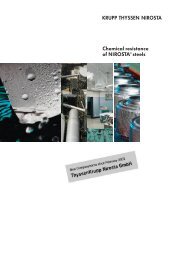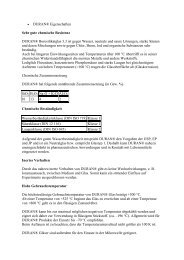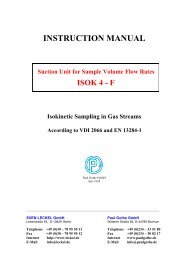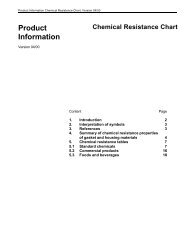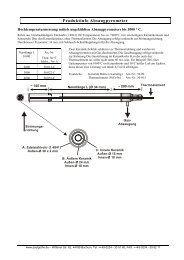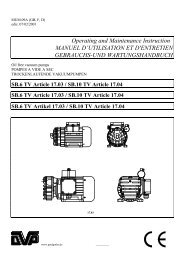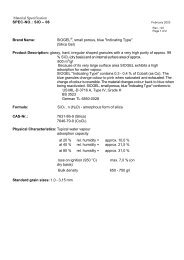Dust-Measurement - Paul Gothe GmbH
Dust-Measurement - Paul Gothe GmbH
Dust-Measurement - Paul Gothe GmbH
Create successful ePaper yourself
Turn your PDF publications into a flip-book with our unique Google optimized e-Paper software.
No mechanical cleaning shall be applied to recover dust deposits upstream of the filter.<br />
The upstream parts shall be rinsed at least after each measurement series on the same sampling plane and at least once a<br />
day. The recovered mass shall be attributed to individual tests in proportion to the mass collected on each filter.<br />
Overall blank sample<br />
An overall blank sample shall be taken after each measurement series or at least once a day, following the sampling<br />
procedure without starting the suction device. This leads to an estimation of the dispersion of results related to the<br />
whole procedure as carried out by the operators for a near zero dust concentration i.e. contamination of filters and<br />
of rinsing solutions during handling on site, transport, storage, handling in the laboratory and weighing procedures.<br />
All overall blank values shall be reported individually.<br />
Thermal behaviour of dusts<br />
Emitted dusts are generally thermally stable. However, on some processes the gases to be sampled contain unstable or<br />
semi-volatile compounds (i.e. in particulate form at low temperature, in gaseous form at higher temperature). In such a case<br />
the measured concentration depends on the filtration temperature and/or on the drying temperature before final weighing.<br />
Differences in the measured dust concentrations (up to factor 10) have been experienced and therefore in such cases the<br />
measured results shall be associated with a stated temperature (i.e. the highest temperature sustained by the sampled<br />
dust before weighing).<br />
Because of the extreme variety of the situations, which may be encountered, it is not possible to find a conventional<br />
temperature which can be relevant in all the cases.<br />
However, since the complete trapping of volatile compounds would necessitate a very low filtration temperature and special<br />
care during sampling, more reproducible results may be achieved if these compounds are not trapped or are further<br />
evaporated when drying. It is the reason why a conventional temperature of 160 °C, which leads to avoid trapping of most<br />
volatile compounds and to decompose most of hydrates is generally convenient.<br />
In accordance with this convention, parts of the sampling train to be weighed should therefore be:<br />
a) conditioned at 180 °C before sampling;<br />
b) set at any temperature equal or less than 160 °C during sampling;<br />
c) conditioned at 160 °C after sampling.<br />
Depending on eventual regulatory requirements and plant authorisation, or on special kind of effluent or on specific objective<br />
of the measurement, other conventional temperature can be adopted: e.g. the temperature should be reduced during postsampling<br />
treatment if aerosols or condensable compounds are to be taken into account.<br />
In any case:<br />
a) the weighed parts shall be conditioned before sampling at a temperature at least 20 °C above the maximum<br />
temperature reached during sampling and post-sampling treatment;<br />
b) the temperature used while sampling and while conditioning before weighing shall be indicated in the test report.<br />
13



